
Brian Cleven, MS, ACSM-CEP
ACSM’s 2024 Certified Professional of the Year is a clinical exercise physiologist, Ironman, local event organizer and pilot.


ACSM’s 2024 Certified Professional of the Year is a clinical exercise physiologist, Ironman, local event organizer and pilot.
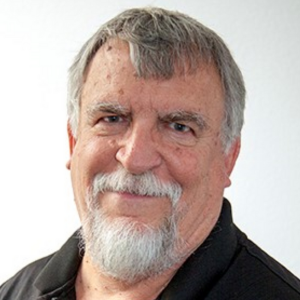
The recipient of the 2024 ACSM Honor Award has dedicated over 50 years of service to the field of exercise science and to the college.

Margot Putukian, MD, FACSM, FAMSSM, is the chief medical officer of Major League Soccer, team physician for the US Soccer Women’s National Teams and the former director of athletic medicine and head team physician at Princeton University
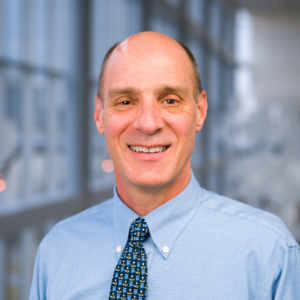
Across his career, Dr. Crandall has been drawing from his varied experiences to evolve the scope of thermoregulation research.
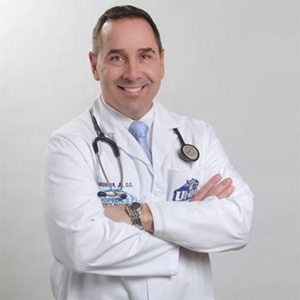
From the battlefield to the sidelines: Dr. Fred Brennan’s journey from military medicine to NFL glory with the Tampa Bay Buccaneers.
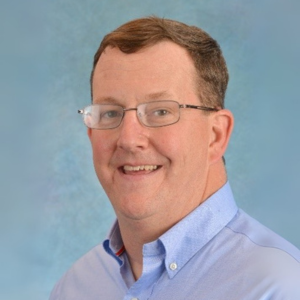
Shawn Kane, MD, FACSM, has been in service his entire career: to the US Army, veterans, students, and to the readers of Current Sports Medicine Reports.
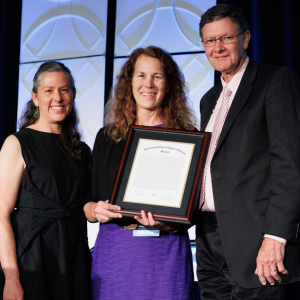
The researcher and 2023 ACSM Citation Award recipient never stops asking questions, and letting the search for answers take her down the road less traveled.
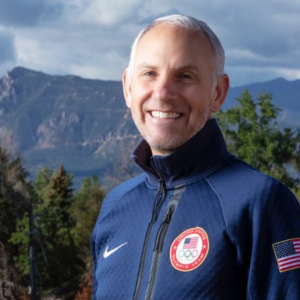
Learn more about the United States Olympic and Paralympic Committee (USOPC)’s chief medical officer.

The 2023 ACSM Citation Award recipient is a fierce advocate for ACSM and Exercise is Medicine® in his home country of Argentina.
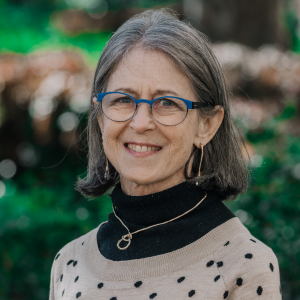
Dedicated researcher and 2023 ACSM Citation Award recipient, Dr. Myburgh has spent her career studying bone and muscle.
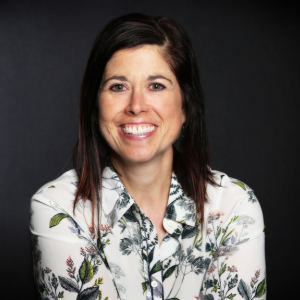
ACSM’s CEO is an avid cyclist with big plans for the college. Learn more about Katie and her vision for ACSM.
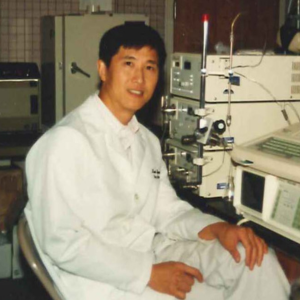
From the basketball court, to the research lab, Dr. Ji has been driven to use his experience and expertise to teach others.
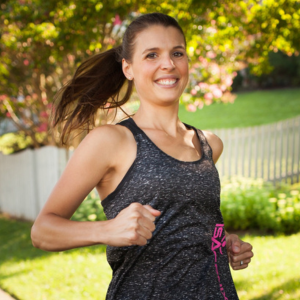
The 2023 ACSM Certified Professional of the Year, has turned her personal challenges into the opportunity to change the lives of women over 35 through fitness.
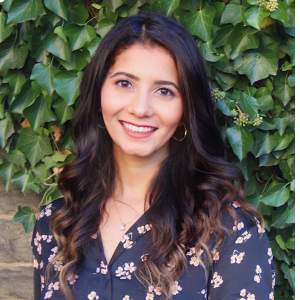
If you’ve ever wondered about the impact of the ACSM Foundation, look no further than how it’s supported the work of PhD candidate Mai Wageh.

Learn about the marathon career and accomplishments of the 2023 ACSM Honor Award recipient.

ACSM’s 2025 Certified Professional of the Year is the president of the Physical Activity Alliance, founder of the Michigan Moves Coalition, founder and CEO of Applied Fitness Solutions and the host and creator of the Wellness Paradox Podcast.
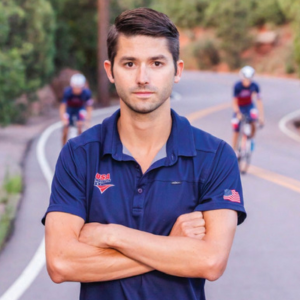
In 2022 at just 33-years-old, Spencer is the youngest individual to take home USA Triathlon’s Olympic Coach of the Year Award.

Learn how the 2025 ACSM Honor Award recipient has impacted the lives of both his patients and colleagues over a storied, decades-long career.

ACSM honors the legacy of it’s 40th president, a giant in the field of exercise epidemiology.

The 2023 ACSM Citation Award recipient has spent his career asking, “What are the limitations to breathing during exercise?”
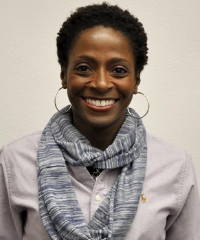
Associate Professor, School of Kinesiology | University of Minnesota
Director, Behavioral Physical Activity Lab (BPAL) | University of Minnesota
Feature published Feb. 23, 2021
Daheia Barr-Anderson joined ACSM nearly 20 years ago when her Ph.D. advisor Debbie Rohm Young, Ph.D., FACSM, told her networking and professional meetings were essential for growth. Nine months after that initial conversation, Daheia found herself in San Francisco presenting for the first time at ACSM’s Annual Meeting.
She recalls her first experience with ACSM. “I felt so out of place. My research focused on a public health perspective to physical activity, and at the time, ACSM seemed to concentrate heavily on basic and applied exercise science. Aspects of diversity felt few and far between. It was the expectation for me to attend and present, so I did. I am so glad that I didn’t let that first experience with ACSM define my future relationship with the college.”
Daheia continued to attend and present at more and more meetings. She networked with colleagues from diverse disciplines, and she volunteered her time and expertise to serve on multiple committees. When Daheia was selected in the first class of the Leadership & Diversity Training Program, she felt as if she’d found her place – and professional home – at ACSM.
ACSM staff recently connected with Dr. Barr-Anderson to learn more about her research, how the college has diversified through the years and the role she has played in ACSM’s growth.
As a native South Carolinian, I earned my B.S. in Biology from Winthrop University in Rock Hill in 1998 and my MSPH in Epidemiology from the University of South Carolina in 2000. I held a two-year Minority Health and Disability Statistics Fellowship with the National Center for Health Statistics before I received my Ph.D. in Kinesiology from the University of Maryland College Park. After a two-year postdoctoral fellowship in Adolescent Health, I started a tenure-track assistant professor position. I am currently a tenured associate professor in the School of Kinesiology at the University of Minnesota and director of the Behavioral Physical Activity Lab (BPAL).
My research focuses on the behavioral aspects of physical activity, sedentary behaviors and obesity prevention in youth and adults. I am particularly interested in home- and community-based, environmental interventions that incorporate both physical activity and nutrition to achieve healthy outcomes and to decrease racial/ethnic health inequalities. My current projects include: 1) explore the factors within the home activity and food environments that interplay with individual and interpersonal factors to contribute to overweight and obesity in African American girls ages 4-8 years, and 2) examine the use of yoga to address cardiovascular risk factors in sedentary African American women.
Before I can answer what inspired me to pursue my research interests, I must first tell you why I even wanted to pursue a career as an academic researcher and professor. When I started my MSPH program, I was a bright-eyed, bushy-tailed 21-year-old who had no idea what she wanted to do or be but was enthusiastic about the prospects. Barb Ainsworth, ACSM Fellow and past president, and one of my first professors at the University of South Carolina, can attest to this. We still chuckle about some of our first encounters.
A series of events during my master’s program planted the seed for me to pursue a research career and highlighted the importance of diversity and representation among college professors. As to wanting to focus on physical activity, my husband Rodney credits himself for planting that seed! He said to me, you like to exercise so why don’t you study exercise? That statement did get me thinking. During my minority health and disability statistics fellowship after my master’s program, I examined health differences between U.S.-born and foreign-born Blacks. Hypertension, high cholesterol, heart disease and obesity were some of the health conditions I studied and using physical activity and exercise for prevention and treatment were recurring themes. It was at that point I decided that I wanted to study physical activity. My focus sharpened during my doctoral studies.
For my first two degrees, I was in a college of Biological Sciences and then in a School of Public Health. I had never heard of ACSM until I started my doctoral studies. One month into my Ph.D. program, my advisor Debbie Rohm Young says to me that presenting and networking at professional meetings are essential to my growth as a young professional and the abstract deadline for ACSM is November 1. Nine months later, I was in San Francisco presenting for the first time at the annual meeting.
I remember feeling so our of place and excluded at that meeting. First, my research focused on a public health perspective to physical activity, and at the time in 2003, ACSM seemed to concentrate heavily on basic and applied exercise science. Additionally, I am an African American woman and the membership seemed to be dominated by white men. Aspects of diversity felt few and far between. But, it was the expectation for me to attend and present at ACSM, so I did. I am glad that I did not let my first experience with with ACSM define my future relationship with the college. As I attended and presented at more and more meetings, networked with colleagues from diverse disciplines and served on various committees when selected in the first class of the Leadership & Diversity Training Program, I saw that I truly do have a place in the future of ACSM.
I remember when Melicia Whitt-Glover became the first black female Fellow of ACSM, and now I serve on the ACSM Board of Trustees under the leadership of NiCole Keith, the college’s first Black female president. Over the years, there have been presidents and other leaders who not only said that they valued diversity, but invested in infrastructure, programs and sweat equity to make it a reality. I have had the amazing experience to witness the growth of ACSM with the diversification and expansion of both its membership and its research scope.
One can see that a theme to much of my work with ACSM has to do with diversity, which I deeply believe in. As ACSM grew and evolved, I wanted to be a part of the change. As opportunities arose, I expressed interest. The decision to make ACSM my professional home has been one of the best choices of my career.
For me, as we are at such a pivotal time in history in which there is a strong and steadfast interest to truly address societal inequalities and inequities, the question is not “how can we” but “how can we not” work together.
ACSM has been the foundation of several professional development experiences and the heart of my professional network. The college has truly helped shaped my career.
I don’t know if my fellow ACSM members would be surprised, but I hope to run my first ultramarathon in May! Inspired by fellow ACSM member and friend, Olivia Affuso, I signed up for the Ice Age Trail 50K in Wisconsin for 2019 but could not run it due to health issues. I deferred until 2020, but you know, COVID-19 happened. Hopefully, the third time truly is a charm as I am planning on running the race with two of my doctoral students.
I am deeply honored to have the opportunity to share my story with the ACSM community.
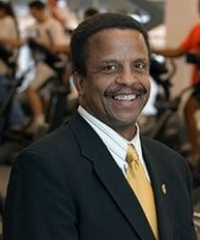
Chair and Professor, Department of Kinesiology and Health | Georgia State University
Feature published Feb. 9, 2021
Dr. Brandon has been studying lifestyle choices with an emphasis on body composition and obesity in African Americans for roughly 40 years. He selected the research focus in the 1980s when health statistics indicated that African Americans had a higher prevalence of morbidity and mortality. His research has yielded important insights related to cardiometabolic morbidity and mortality and on functional ability and aging.
Dr. Brandon joined ACSM 44 years ago. He was one of the first Black members and Fellows of the college. Dr. Brandon regularly participates in annual meetings. He’s also been involved in a number of committees, including the Diversity Action Committee, the Minority Recruitment subcommittee, the Minority Health and Research Interest Group, the Aging Interest Group and the Communications and Public Information Committee. Dr. Brandon is also an active member of the Southeast Chapter and served as chapter president.
ACSM staff recently connected with Dr. Brandon to learn more about his research, how ACSM has changed through the years and helped his career, as well as his advice for students.
When I was in high school, I was an above average player on our football team, which was number eight in the state. When I went to college, I decided to major in physical education and sociology. My desire was to be a coach. During my sophomore year, the young man who was my high school position coach resigned from coaching and went back to school to earn a doctoral degree. I had a conversation with him and asked him why he got out of coaching. He said, “Son, I could not see myself 60 years old making a living blowing a whistle.” That killed my interest in coaching, and I changed my major that day to focus on sports medicine and study exercise physiology.
Recently, my primary areas of research are lifestyle choices and cardiometabolic (CMO) risks with emphasis on body composition and obesity in African Americans. African Americans typically experience greater CMO morbidity and mortality, and I wanted to understand why. I also have focused a great deal of effort studying functional ability and aging, looking to answer questions like can functional abilities of aging adults be extended and if so, what are the processes and contributions made by muscles fitness?
In the 1980s when I was choosing a research focus, health statistics indicated that African Americans had a higher prevalence of morbidity and mortality. The main cause of this discrepancy was significantly associated with cardiovascular and morphological issues. As an African American, better understanding this issue was important to me. In addition, African Americans were experiencing overweight and obesity far more than other groups. Dr. Ben Massey, one of my professors at the University of Illinois, suggested that I consider a career studying this area, and as the saying goes, the rest is history.
I also wanted to understand some of the functional challenges that older adults experience, as they are more prone to falls and many cannot get up if they fall. I decided to study muscle function and the effects of resistive training on physical function in older adults. My main conclusion was that muscle strength frequently is not responsible for the fall. The latency period between the initiation of the perturbation and getting the muscles to respond is frequently the reason for the fall.
The most significant outcomes are that differences in cardiovascular and morphological functions exist between African and European Americans and, in some cases, these differences can have devastating health consequences. For example, African Americans experience greater prevalence and more severe episodes of hypertension and obesity. My work coincides with data from the U.S. Department of Health and Human Services that shows African Americans are more likely to die from heart disease than European Americans. My work also indicates that lifestyle choices, along with physiological and morphological differences like living conditions and frequency of receiving medical care, contribute to the greater morbidity and mortality among African Americans. Additionally, much of the health care system in American is based on data from European Americans and may not be optimal for African Americans. Several studies on African American health have been completed by non-African Americans, and the authors of those studies may not have been sensitive to the culture, or physical and stress responses of African Americans.
ACSM enabled me to know and have conversations with some of the best sports medicine professionals in the world. I found it interesting to be able to discuss issues with authors whose textbooks I used in my classrooms early in my career.
A benefit from SEACSM is the mentoring relationship with Dr. B. Don Franks, who was supportive and, in my mind, a significant contributor to the diversification of ACSM and SEACSM. As a young assistant professor, Dr. Franks was instrumental in my nomination for president of SEACSM. In fact, it resulted in me being the first African American president of a regional ACSM chapter. As SEACSM president, I met a number of older, established SEACSM and ACSM members. Additionally, I was able to establish mentoring relationships and invite several minorities and underserved individuals to join SEACSM/ACSM.
I became a member of ACSM and presented my first paper, “Comparison of Two Procedures Employed in Measuring Body Density in Children” in 1981 during the ACSM Annual Meeting in Miami. I did not see another person of color during the entire conference. Shortly after, I met Vernon Bond, one of Dr. Franks’ students and another person of color. At that time, few, if any, presentations focused on African Americans. Due to the diversification focus of ACSM’s leadership, great diversity growth has been experienced, and ACSM is a much better organization as a result. Today there are several groups working to enhance diversity, and a recent past president made diversity the focus of her presidency. Currently, ACSM is proud to have an African American president, a number of other African Americans in leadership positions and other African American candidates for elective office. As the old saying goes, we as African Americans have come a long way; however, there are still miles to go.
I strongly suggest that young minority and underserved students entering the sports medicine field search for a mentor they can relate to who has been a member of ACSM for a few years. They should consult with peers, advisors and leaders and feel free to ask questions about the organization. Probably the best way to grow in ACSM is to become active in your regional chapter. Regional chapters are more student driven, and members are frequently more willing to speak with you as that may enhance their recruitment of you. Please do your homework relative to how professional organizations can help start and advance your professional growth. We have a number of programs for young professionals with diverse backgrounds in the SEACSM chapter and in ACSM.
I enjoy seeing new attendees who appear lost or are excited when you walk up to them and start a conversation. I believe inclusion is the key for growth for all people and that exclusion of anyone has the potential to limit everyone.
I wish to thank President Keith and ACSM for providing this opportunity to talk about my experience in ACSM, as Vernon Bond and I were two of the early Black members, if not the first. Additionally, we were two of the early black members to become ACSM fellows in the mid-1990s. In fact, I believe Vernon was the first. Please enjoy Black History Month and remember: They who lift anyone benefits everyone.

President and CEO, Gramercy Research Group
Executive Director, Council on Black Health
Sometimes minor setbacks have major silver linings. For Melicia Whitt-Glover, Ph.D., FACSM, spending a lot of time on the injury list as a high school runner and soccer player led to a fruitful public health career focused on addressing health inequality.
Working through her injuries with the school’s personal trainer piqued Whitt-Glover’s interest in physical therapy and athletic training — fields she went on to pursue as an undergraduate at UNC-Chapel Hill. It was there she met Dr. Barbara Ainsworth, a legendary figure at ACSM and in the sports medicine and exercise science community in general. Ainsworth encouraged the budding young academic to get involved with professional organizations, attend meetings and introduce herself to potential mentors.
Whitt-Glover soon began her long-running ACSM affiliation as a member of the Southeast Chapter, and after joining the national organization as a student member in 1994 — later becoming a professional member in 2000 — she would go on to serve on or chair numerous ACSM committees, special interest groups and advisory bodies, including the American Fitness Index Diversity Workgroup, the Exercise is Medicine® USSP Underserved Community Advisory Group, the Evidence-Based Practice Committee, and the Strategic Health Initiative on Health Equity. Nor would she miss an annual meeting — barring the time she was busy getting married — until the COVID-19 pandemic. She became an ACSM fellow in 2006.
While at UNC, Whitt-Glover logged professional experience hours working as an assistant trainer at North Carolina Central University (NCCU), a Historically Black College in Durham, North Carolina. It was there she was able to fully comprehend the disparities the Black community faced. What she had understood personally and implicitly growing up as a Black girl and young woman was now laid bare in terms of tangible resources: NCCU was noticeably short on equipment and funding, and while her own school, UNC, had numerous trainers on staff, NCCU had a single trainer doing their level best to cover all of the college’s sports programs. Whitt-Glover knew things had to change, and she knew she had to play a part in that change.
After completing both a bachelor’s and master’s at UNC, Whitt-Glover followed Ainsworth to the University of South Carolina, eventually earning a doctorate in epidemiology, after which she took up a two-year postdoc position at the University of Pennsylvania School of Medicine and spent an additional year on the Ivy League institution’s faculty. There she met Dr. Shiriki Kumanyika, who helped Whitt-Glover understand how to use her personal lived experiences and professional education to shape her research to advocate for health in Black communities.
But she quips that the cold Philadelphia weather eventually got to her, and she subsequently joined the faculty at Wake Forest University School of Medicine in Winston-Salem, North Carolina.
However, 2009 move into the private sector put Whitt-Glover in a position to do some of her most impactful work: She left academia to found Gramercy Research Group, an organization dedicated to promoting health and well-being through numerous channels and projects, from a faith-based physical activity program focused primarily on improving the health of Black women to partnering with organizations to maximize the impact of grants and contracts.
While remaining Gramercy’s president and CEO, Whitt-Glover took on yet another role, becoming the executive director for the Council on Black Health, a research and policy organization founded by Dr. Kumanyika and dedicated developing a national agenda for Black wellness and supporting healthy communities. The Council works with partners across the nation to address health challenges and disparities, and focuses particularly on policy, systemic and environmental change: From environmental pollution to unsafe or otherwise unwalkable or bikeable neighborhoods to food deserts, it’s difficult to maintain and improve your health, no matter how dedicated you are, when your surroundings aren’t also on your side.
When it comes to advice for up-and-coming ACSM sports medicine and exercise science professionals, Whitt-Glover recommends attending as many association meetings as possible, making every effort to get introduced to researchers whose work you admire, and to keep up one’s connections, despite the distance that has set in after the COVID-19 pandemic. You never know where a chance meeting might lead.
As for the college itself, she says ACSM is doing great work, but she would love to see more focus on making the groundbreaking research its members perform accessible to as many people as possible. After all, it’s one thing to make a discovery but quite another to artfully and successfully share it with everyone who would benefit from it.